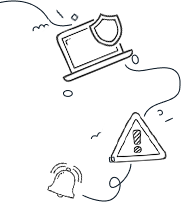Introduction
Radio Frequency Identification (RFID) is so interwoven into our daily lives that it’s like that one friend who always shows up uninvited—only instead of eating your snacks, it’s tracking your stuff! Though it sounds high-tech and borderline sci-fi, many of us use this technology without even realizing it. So, let’s unpack this invisible wonder!
RFID operates on the magical waves of radio, helping us identify and track objects like a superhero scouting for his sidekick. From speeding up processes to securing data like a goalie with a no-goal policy, RFID is a game changer. It’s as useful in shopping, transportation, and healthcare as a Swiss Army knife is for an outdoorsy weekend. But alas, even the best tech has a few skeletons in its closet—so let’s bravely face those risks!
How RFID Helps Workflow
In the bustling world of retail, RFID tags are like the Sherlock Holmes of inventory management—they find missing stock faster than you can say “price check.” These little beauties allow stores to accurately track their stock, reducing losses from theft faster than a cat can knock a glass off a table. And let’s not forget rapid checkouts! With RFID, customers can zap their entire carts in seconds—a win-win for everyone involved, unless you count the poor cash register that’s about to go on a mental holiday.
RFID tags also make public transportation smoother than a jazz saxophone solo. Those nifty cards for buses and subways, as well as office access badges, give you quick, contactless entry. Wave goodbye to fumbling for your keys and cash—now you can strut right in, looking cool and collected. And for car lovers? Unlocking your vehicle and breezing through toll booths is like living in a James Bond movie, minus the dramatic stunts, of course!
In healthcare, RFID is the unsung hero. Hospitals equip wristbands to ensure patients get the right meds—nobody wants a surprise mix-up here! Tagged medical equipment can be found easier than your misplaced coffee mug—because let’s face it, we all know that’s what’s really curtailing surgeries.
Cybersecurity Challenges Behind the Technology
But, dear reader, with great power comes great responsibility—or in this case, great risks! RFID may seem like your best bud, but let’s not ignore the lurking cybersecurity monsters. Bad actors with nifty gadgets can intercept signals and eavesdrop on your private musings, like that one friend who reads your texts without asking. They can even duplicate RFID tags for unauthorized access—imagine having your lunch stolen but on a molecular level! What’s worse, a compromised tag could transform into a digital paperweight, rendering security features about as useful as a screen door on a submarine.
And when RFID tags turn into data hoarders by storing personal information, the stakes get even higher. Unauthorized access could lead to privacy violations that would make even the most seasoned introvert sweat bullets. Additionally, RFID systems are vulnerable to distributed denial-of-service (DDOS) attacks, which can put an end to your access control party faster than a bouncer tossing out troublemakers. So protect your data—after all, you wouldn’t want to be caught wearing a ‘Kick Me’ sign!
How to Safely Leverage RFID Technology
To make the most of RFID’s wonders without landing in trouble, take a few simple precautions. Stay sharp for any weirdness—if that RFID-enabled card starts acting like a drama queen or shows unexpected activity, contact your issuing authority ASAP!
In professional or medical scenarios, ask about all the security measures available. Think of it as a tech-savvy detective sniffing out potential dangers. Encryption and access controls can help padlock your data, and your inquiries may just inspire stronger safeguards.
Lastly, treat your RFID-enabled devices like a beloved pet. Secure them, give them regular checks, and be on the lookout for signs of trouble so you can replace any compromised tags faster than you can say “digital security.”
Conclusion
The RFID market is expected to rocket to $12.61 billion by 2025. This technology enhances convenience and efficiency across various industries, much like a good office coffee machine. However, as we embrace the perks of RFID, we must also acknowledge the pesky cybersecurity challenges—such as eavesdropping and cloning—like unwelcome party crashers.
By using protective accessories, remaining vigilant, and securing your RFID items, you can enjoy the benefits while keeping the risks at bay. So, how has RFID shown up in your daily escapades? After all, it might just be the magical thread weaving through your life without you even knowing it!
The post RFID: Inside the Invisible Technology appeared first on Cybersafe.




